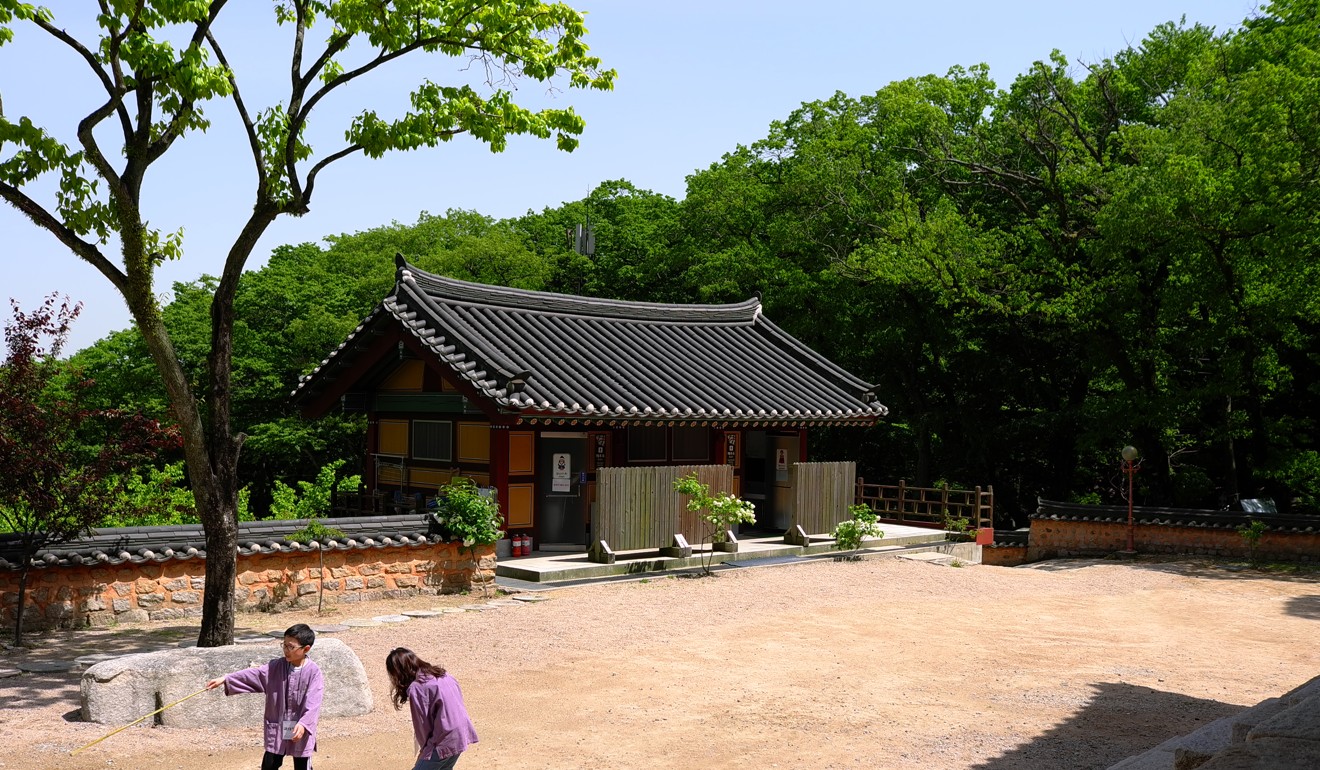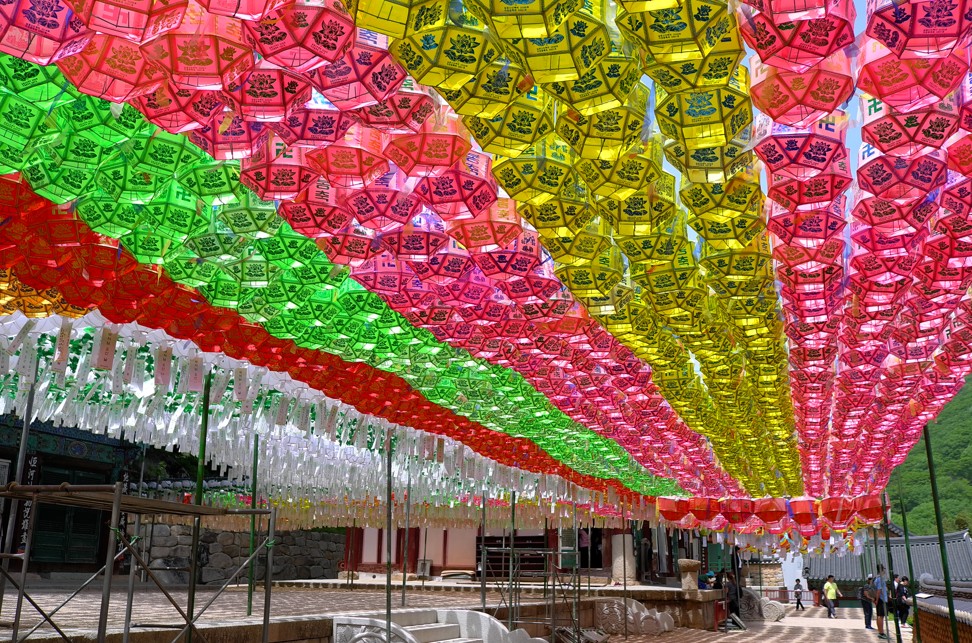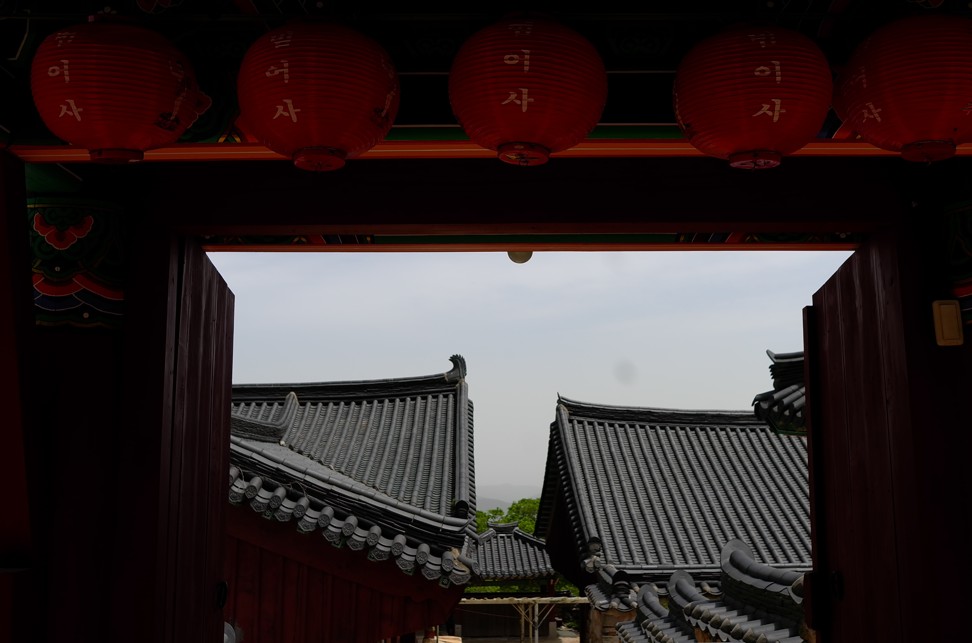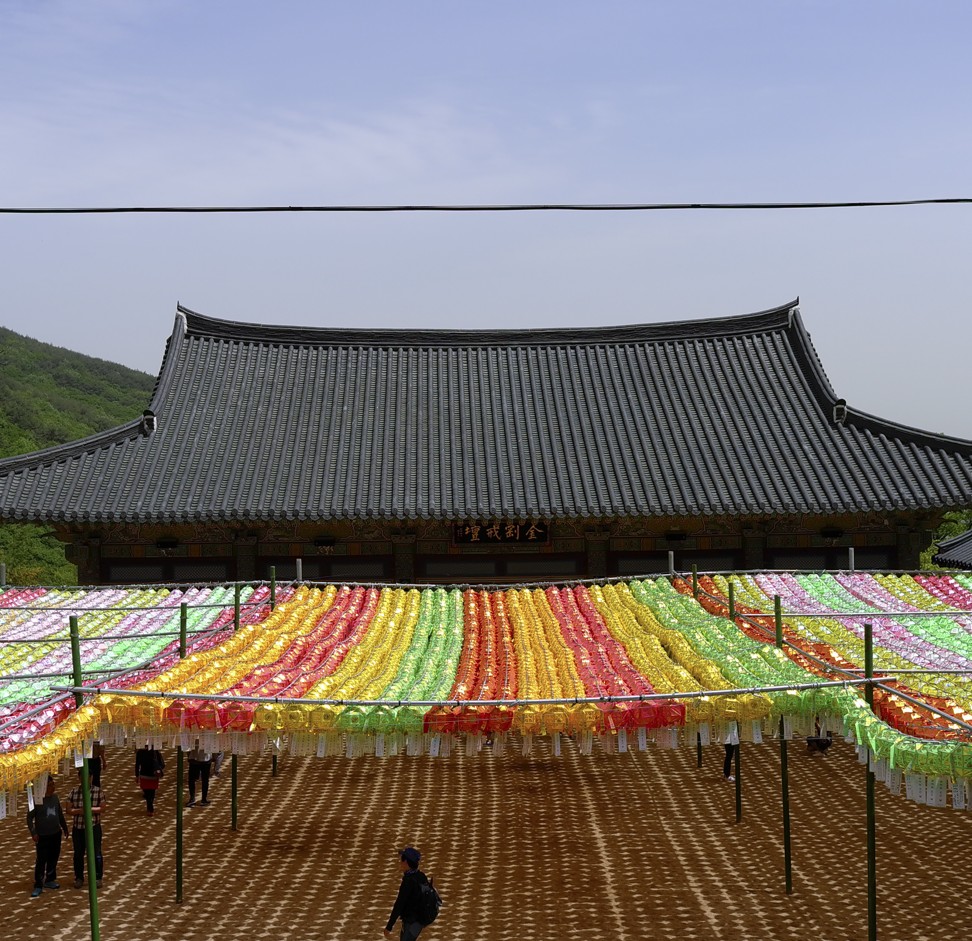
A sceptic’s guide to achieving overnight spirituality and enlightenment – Korean Buddhist temple stay explored
The Beomeosa Temple, near Busan, is one of more than 30 monastic retreats in South Korea where visitors can immerse themselves in a temple’s life and routines and get a meta-detox from 21st century life
It’s not just luxury villas that promote the benefits of being able to unplug and unwind – it’s the principal mantra of a Korean Buddhist temple stay too.
‘Happiest man in the world’ has a tip for Hongkongers on how to be less stressed out
The Beomeosa temple, on a mountain south of Busan, is one of more than 30 monastic retreats in South Korea offering accommodation in an ascetic setting. Other countries have Buddhist B&Bs, but in Korea it’s a chance to immerse yourself in a temple’s life and routines. People can choose to stay for up to a week if they are serious about Buddhism, but many urban dwellers opt for a one-night stay.
These meta-detox experiences are open to all – including meat-eating, Facebook-addicted non-believers like myself.
Our group consists of about 15 people, and once we’ve changed into loose-fitting purple tops and grey sweatpants, our first activity will be simply to get to know each other and discuss Buddhism.
We are urged to sit cross-legged on the floor – something that might come naturally to yoga practitioners but which after about 15 minutes proves challenging for many of us, especially older participants.

We’ll be doing this a lot over the next 24 hours, and it begins to dawn on me that this temple stay might actually feel like work.
Founded 1,400 years ago, the Beomeosa Temple’s scattered grounds consist of a range of shrines, pagodas and hermitages. It’s only 15 minutes by bus from Busan, but it feels worlds away from the K-pop and grilled pork restaurants below.
While locals come up to stroll the grounds and admire ancient pillar gate and stone shrines, none of it is overly grandiose. After all, Korean Buddhism is grounded in humility. There are no lavish indulgences, gold robes or material vanity here. Detachment and enlightenment are the tenets.
Cancer patient’s tumours shrink on vegan diet and Buddhist meditation
The hall has wooden floors and cushioned mats along the wall. There are no incense or mandala paintings, just a gold-leaf Buddha relief for decoration. Half of our group are foreigners (some with little knowledge of Buddhism, others Eastern Studies majors), and the rest Korean families, ranging from children to elderly. None of us are budding monks.

After the group introductions, we have a short break to literally stretch our legs. We will spend the bulk of the stay in this same room – meditating, having tea, and talking to the abbot and monks. The women will even sleep in this hall. As there are fewer men, we are relegated to a smaller space.
Our quarters, on the periphery of the main temple, are sparse but within a scenic setting.
Secret Seoul: the South Korean capital’s hidden gems that only locals know
The surrounding forest is magnificent, though our courtyard of loose gravel and weedy growth feels like a razed lot waiting to be developed. The dorms for monks and nuns are even farther from the main temple.
At 5.30pm, it’s time for dinner. This might seem early, but bedtime is 9.30pm. Eating proves to be a formal affair – not tuxedos and gowns formal, but with a rigidly structured procedure. We sit once again in the lotus position, and four bowls are placed in front of each of us. One for soup, another for rice, the third for the vegetarian dishes, and the fourth filled with water. An assortment of greens, marinated root vegetables and tofu accompany the rice.
Visiting Tibetan Buddhist master explains the benefits of meditation
We’re told to take what we need but not to waste a drop of rice. “Food is medicine to ease our greedy minds,” the monk reminds us. Obediently, everyone nibbles modestly. Seconds are allowed but most are too polite to have some. I know I will be hungry later, so I spoon a little more rice and spinach with fermented tofu.
Overall, the food is quite bland. The bean sprout soup is watery. The kimchi is mild. But flavour is not the point. We eat in silence to maintain mindfulness, focusing on sustenance as a mere necessity.
Another elaborate ritual is performed to clean the three bowls. The same water from the fourth bowl is used to clean each of the other bowls in a specific order and method. At the beginning of the meal, we were advised to save a single pickled radish to wipe the bowls clean – but I forgot and ate mine.
A simple cloth laid over the bowls pre-meal is then used to dry each ware. I am assuming (or hoping) someone will actually use detergent on them later on.

In hindsight, dinner is a graceful ritual, but like novices in a dance class we stumble with the basic steps too much to appreciate its economical elegance.
Afterwards, we enjoy listening to some monastic musical instruments including the sternum-shaking temple drum. Now, with the worshippers gone, the compound is incredibly serene. Coloured banners and lanterns festoon the grounds. The breathtaking walk at dusk even means I forget I’ll be sleeping here tonight on a flimsy mattress.
Superheroes come to the rescue of Thailand’s Buddhist temples
The next morning, we rise at 5am for silent meditation, the idea being to focus not on our discomfort but our spiritualism. The monk exhorts us to chant, clear our minds, consider our tiny place in the big universe and overcome the lactic acid building up in our legs. Following a less formal breakfast, we hike up the mountain to visit shrines and hermitages further up.
The strenuous walk is worth it when we reach the summit and see Busan below, distant and slightly insignificant.
A Busan native’s guide to what to see, do and eat in film capital of South Korea
The rooms up on the hill are used for private visitors from other Buddhist associations, or for monks to confer in even more isolation. They are basic, more utilitarian than ornamental, though there are several statues of important figures from the temple’s history.
Our hike pales in comparison to our next task: making a string of prayer beads. Intended to be a sort of meditation in motion, the drill is that for each bead we insert the string through, we must perform a full prostration from a standing position. In total, there are 108 beads. Plus we will maintain a strict tempo to encourage Zen transcendence.

These spiritual burpees are a real test and most of the group fall behind or resort to a kneeling bow. At first, I approach it as a physical challenge to keep pace with the abbot, but eventually I let go. The repetitive motion becomes quite freeing as muscle memory takes over. Tired but not taxed, I stop thinking and enter what athletes might call “the zone”.
“You can’t see the bottom of the sea if the water is rough,” says the monk in analogy.
Resilience isn’t just being tough; it’s a skill you can develop, and meditation can help
Only towards the end of our stay do I manage to actually clear my mind. The prayer beads will be our keepsake, but I like to think that in making mine, I learned to let go. I’m not sure I feel enlightened, but at least I’ve stopped caring that my phone’s battery is almost dead.
Getting there

